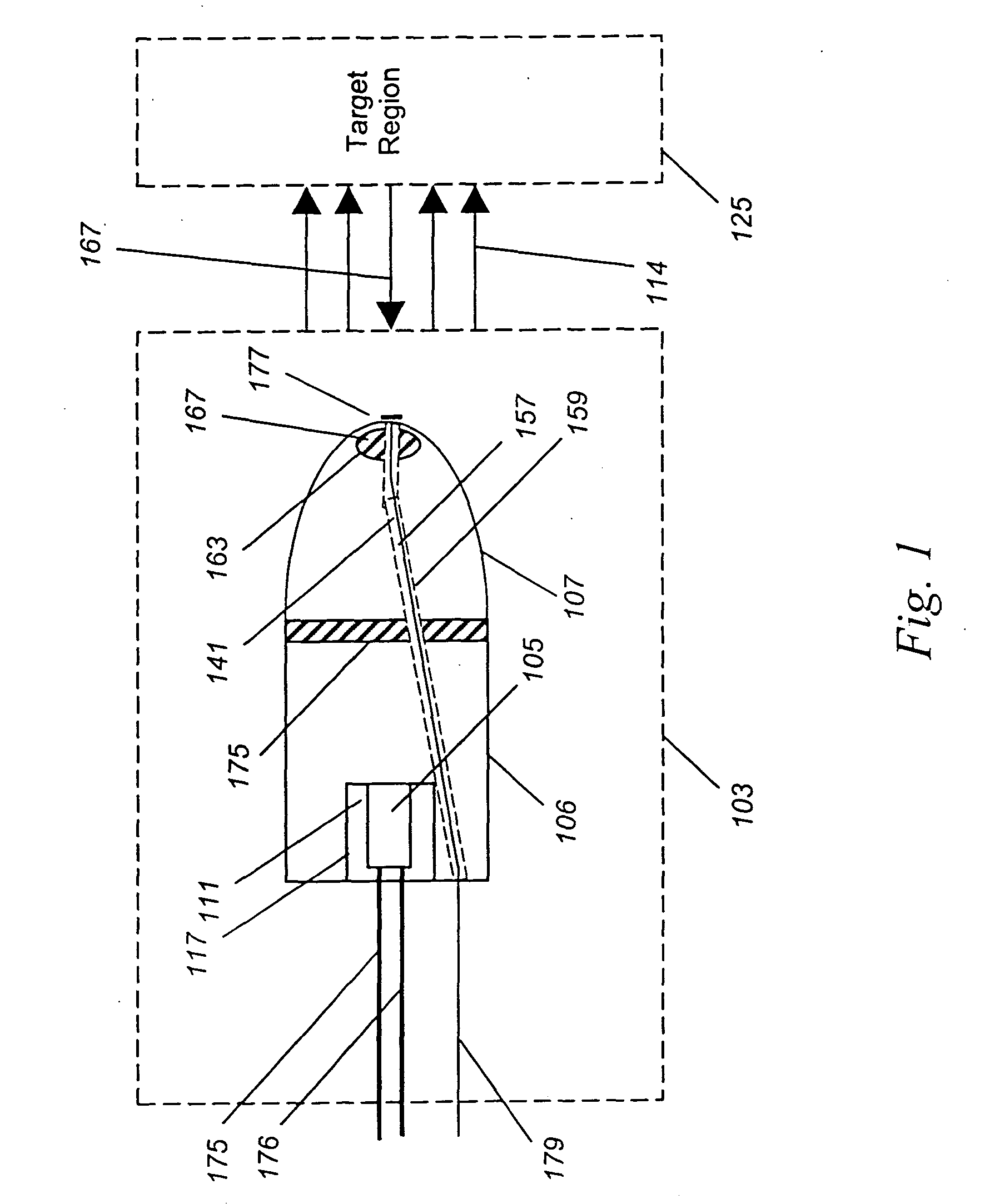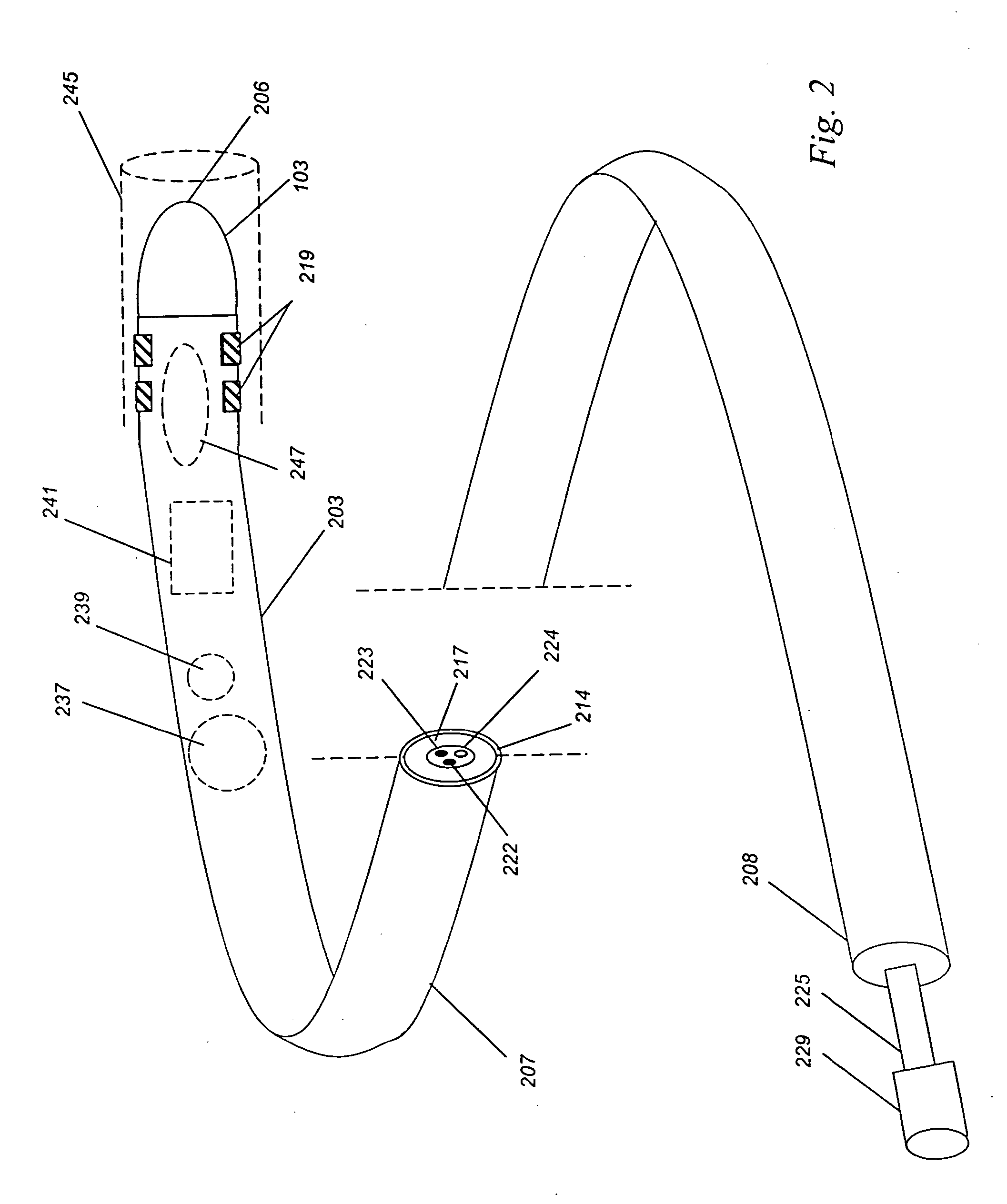Spectroscopy illuminator with improved delivery efficiency for high optical density and reduced thermal load
a technology of high optical density and illuminator, which is applied in the direction of spectroscopy diagnostics, optical radiation measurement, instruments, etc., can solve the problems of wasting a large proportion of the power supplied to them as heat and unusable wavelengths of light, rendering inefficient any attempt to direct their light either onto spectroscopy samples, and achieving high efficiency delivery. , the effect of reducing power consumption and/or heat production
- Summary
- Abstract
- Description
- Claims
- Application Information
AI Technical Summary
Benefits of technology
Problems solved by technology
Method used
Image
Examples
example 1
[0085] Improved Delivery Via Improved Conversion Efficiency
[0086] One method to improve effective delivery efficiency is to improve the conversion efficiency--that is, to reduce the amount of power needed to produce a given amount of usable light.
[0087] In order to evaluate the impact of design considerations, we modeled the expected improvement in the efficiency of light delivery achieved by altering various aspects of an illumination source design, and then verified our model data using experiments. This model incorporated known features of light generation from tungsten fiber lamps with and without halogen recycle, the transmission characteristics of certain optical fibers, known general characteristics of broadband light emitting diodes (LEDs), and each aspect of the model was tested in the laboratory to confirm agreement of the predictions to those of measured results.
[0088] First, we considered a high efficiency halogen light bulb free-space coupled to a tissue sample--that is...
example 2
[0106] Measurement Using LED and Bulb-Based Probes
[0107] In order to test the validity of the data generated using the model shown in Example 1, we constructed two working probe types, one set using a halogen bulb and a second set using a white LED. Light incident on a tissue phantom was then measured using a silicon-based photodiode system (EXFO, model FOT-50, Quebec, Canada).
[0108] In these measurements, the skin was illuminated using the 15W halogen bulb and the 250 mW white light LED described in the preferred embodiment. Light returning from the skin was collected using a 3.5 mm diameter circular aperture and measured in overall intensity from 400 nm to 1100 nm.
[0109] Results for in-band free-space illumination are shown in Table 3, below:
3TABLE 3 Measured Broadband Free-Space Coupling For Bulb vs. White LED. Trans. Max Thermal Type of1 cm Field Bulb Load (mW Illuminator Current Voltage Power Intensity Temp Heat / Source (mA) (V) (mW) (mW) (.degree. C.) Light / cm.sup.2) Halogen 1...
example 3
[0112] Improved Delivery Via Improved Transfer Efficiency
[0113] An alternative method for improving the net efficiency of light delivery is to improve the coupling of the light source to the sample, measured by transfer efficiency.
[0114] For this example, we considered again a bright halogen projection-type bulb, too hot to put directly next to a sample such as tissue, and in this case even too hot to be safely placed into the handle or tip of a device such as a medical probe.
[0115] One way to get around the heat issue is to fiber-couple the bulb to the sample, thus removing the inefficient and hot light emitter from the vicinity of the sample. As the conversion efficiency of a high-efficiency halogen bulb is difficult to modify, improving the delivery efficiency represents an approachable way for increasing the net transfer efficiency.
[0116] As noted, the best coupling of light would occur in theory if the fiber could be placed in contact with the filament itself, as this is where ...
PUM
 Login to View More
Login to View More Abstract
Description
Claims
Application Information
 Login to View More
Login to View More - R&D
- Intellectual Property
- Life Sciences
- Materials
- Tech Scout
- Unparalleled Data Quality
- Higher Quality Content
- 60% Fewer Hallucinations
Browse by: Latest US Patents, China's latest patents, Technical Efficacy Thesaurus, Application Domain, Technology Topic, Popular Technical Reports.
© 2025 PatSnap. All rights reserved.Legal|Privacy policy|Modern Slavery Act Transparency Statement|Sitemap|About US| Contact US: help@patsnap.com



